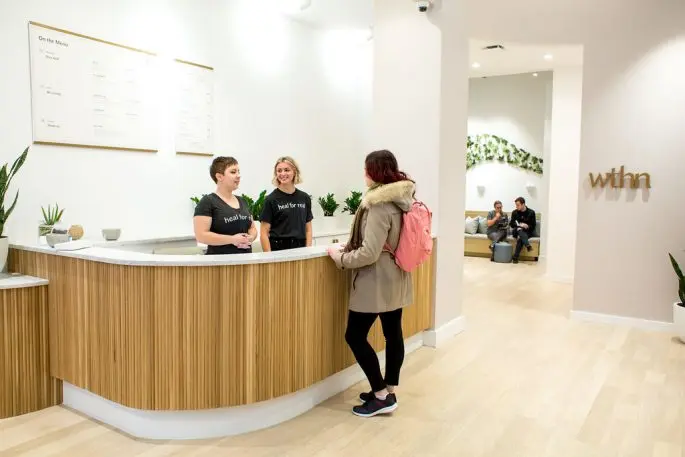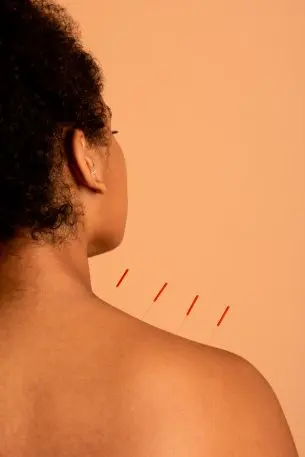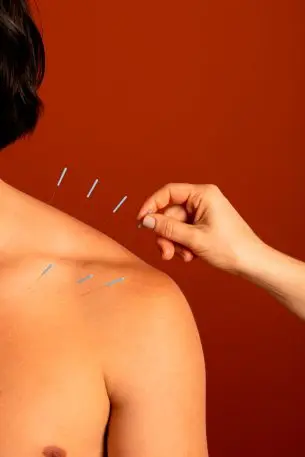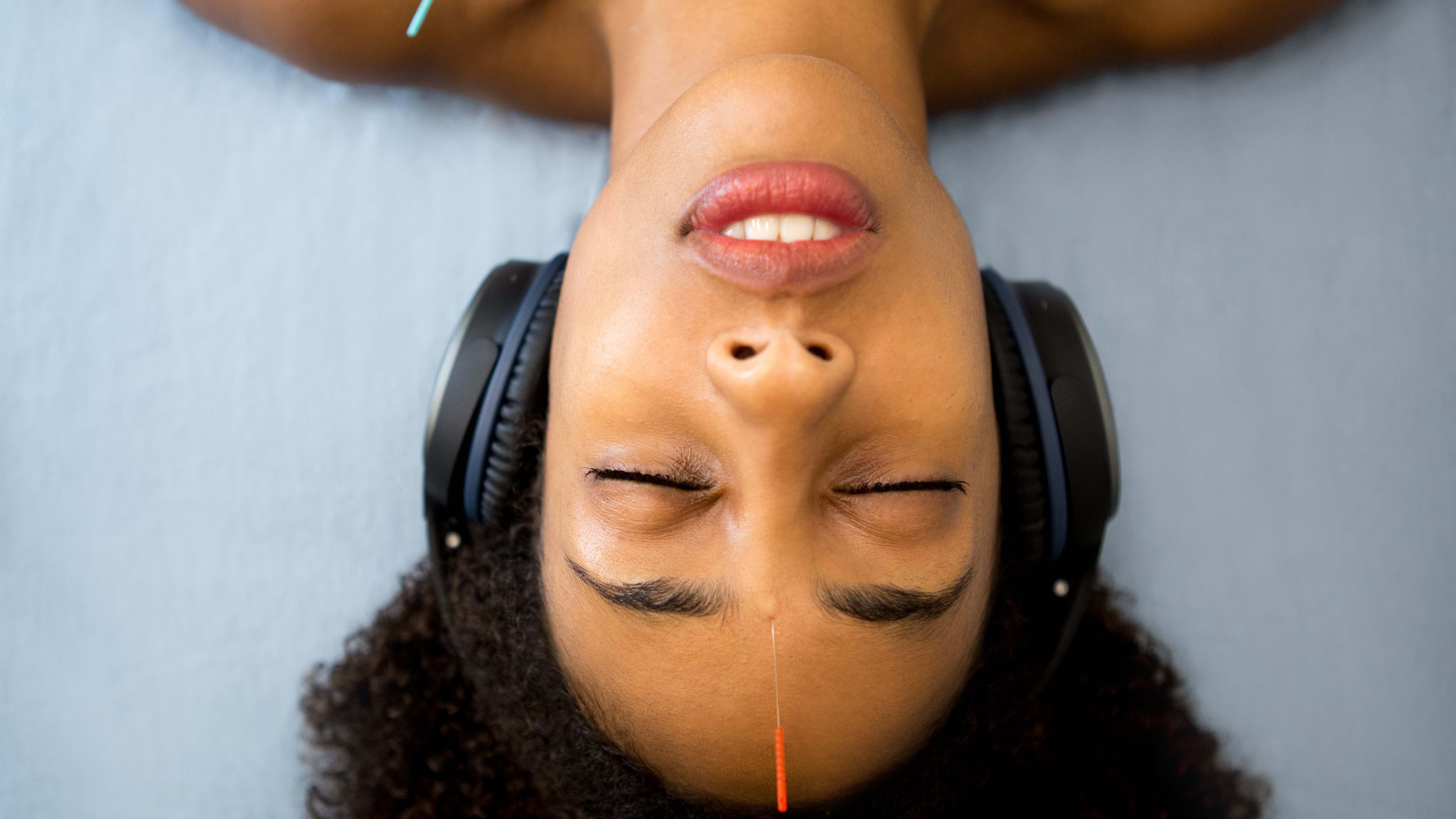With alternative medicine getting more mainstream attention, it’s no surprise that one category is finally getting the Drybar treatment: acupuncture. The ancient practice of strategically inserting thin needles into the body is now found in a sleek, modern storefront in New York’s Flatiron district, alongside boutique fitness studios, matcha cafés, and the shopping district dubbed “athleisure row.”

“One of the things that we’re doing is making acupuncture more visible,” explains Shari Auth, a Chinese herbalist and holistic health practitioner who cofounded the startup with Michelle Larivee, a former investment banker who specialized in raising capital for hospitals and academic medical centers.
The duo tells Fast Company that while there’s no shortage of acupuncturists across the country, it’s a high-low experience, with few middle-range options. On one end, you’re often reliant on individual practitioners whose clinics lack a certain ambience; on the other, it’s often exorbitantly expensive in a luxury spa setting.
Related: Your craniosacralist will see you now: Can a startup bring alt medicine to the mainstream?
Much like Drybar, WTHN aims for an affordable luxury experience that feels both attainable and pampering. It also wants to make it convenient, with its seamless online booking and check-in system, and offer a decipherable list of treatment options that appeal to a wide audience.
“There wasn’t a trusted go-to source,” Larivee says of the current landscape. “There wasn’t a modern reimagination of the acupuncture experience.”

Four years ago, Larivee knew little of the ancient tradition. It was only following a painful ski accident in which she dislocated vertebrae in her neck that her doctor recommended acupuncture. The results, she recalls, were life changing.
“Right away, I experienced pain relief,” says Larivee. “I was sleeping much better, feeling less stress, had a stronger immune system, and had fewer sick days.”
She also believes regular treatment helped her get pregnant and soon found herself trying to convince “everybody” she knew to give it a try. “But then I realized that there was no easy way for consumers to get started.”

Demystifying acupuncture
WTHN breaks it down for newcomers; its cheeky menu lists a wide range of treatments, including those for anxiety, sore muscles, fatigue, chronic pain, insomnia, even indigestion. There are those that promise beauty benefits: “Face Time” promises to reduce wrinkles, calm inflammation, and boost collagen. “It relaxes your whole face for a more beautiful you,” reads the description.
“We are using accessible language to talk about Chinese medicine to demystify what we see as the top three questions people have about acupuncture,” says Auth, “which is, what it’s good for, how does it work, and does it hurt.”
Related: Goop’s conference got even weirder, but somehow more professional
The startup’s staff members have a minimum of three years of training and hold master’s degrees in Chinese medicine. Many also have doctorates from Eastern medicine institutions, the cofounders say, and complete WTHN’s own proprietary training.
It’s a seemingly smart time to invest in the wellness industry as interest in bettering our health hits an all-time high. The Global Wellness Institute estimates the wellness industry is now worth a whopping $4.2 trillion, representing 5.3% of global economic output.
“We are living in what is called the age of stress and anxiety. People are looking for natural remedies for pain,” stresses Auth, who earned her doctorate from the Pacific College of Oriental Medicine. “When people get up off an acupuncture table, they feel relaxed and rejuvenated.”
Much like a spa, WTHN intends to entice customers to pop in for regular breaks of relaxation–not just when they’re in pain. Perhaps, the cofounders believe, it could be what the modern man or woman turns to when they need to reset. For that reason, WTHN offers a membership model meant to embody a lifestyle choice.
“We really want to bring Chinese medicine back to its roots where you do regular acupuncture appointments for self-care,” says Auth.
This brand of self-care isn’t exactly cheap, though it pales in comparison to a luxury spa facial. High-end New York acupuncturists might charge upwards of $150 a session, while no-frill Chinatown spaces can go for $50 or less. At WTHN, an intro session runs $65, and a monthly membership (one treatment a month) costs $75. One-off treatments are $85.

De-stressing millennials
The cofounders see a variety of wellness-oriented millennials flocking to get pricked and prodded: young moms, working professionals, athletes, and basically anyone who needs a break. Those shouldn’t be hard to find, seeing how 3 out of 4 Americans report feeling stressed, and a Harris Poll found that 25% of millennials are willing to embrace alternative therapies.
Auth envisions acupuncture meshing with trends already woven into the mainstream, like spinning classes or juice bars: “This is kind of the last point in the trifecta where you’ve got nutrition, you’ve got fitness, and this is your self-care.”
Moving forward, WTHN plans to first add more locations in New York before taking the concept nationwide, possibly to Los Angeles, San Francisco, Boston, and Washington, D.C., among others. One day, they say, Chinese medicine might just be as commonplace as yoga.
“We have a national vision and a very clear target about creating acupuncture for the next generation of wellness consumers,” says Larivee. “This is really that next natural frontier of wellness and recovery.”
Recognize your brand’s excellence by applying to this year’s Brands That Matter Awards before the early-rate deadline, May 3.
